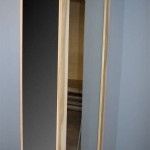Mirroring a Mac Laptop to a Samsung TV: A Comprehensive Guide
Mirroring a Mac laptop to a Samsung TV allows users to display content from their computer on a larger screen. This functionality proves useful for presentations, watching movies, sharing photos, or simply extending the Mac's display for increased productivity. Several methods exist to achieve this connectivity, each with its own advantages and disadvantages. Choosing the appropriate method depends on factors such as the user's specific needs, the available hardware, and the desired level of performance.
This article provides a comprehensive guide to mirroring a Mac laptop screen to a Samsung TV. It delves into various methods, required equipment, troubleshooting steps, and potential limitations, offering a clear understanding of the process and potential solutions for common issues.
Understanding the Requirements and Compatibility
Successful screen mirroring requires both the Mac laptop and the Samsung TV to meet certain compatibility criteria. While most modern devices support screen mirroring, older models may lack the necessary protocols or hardware. Before attempting to mirror, verify the following:
First, ensure that both the Mac laptop and the Samsung TV support a common screen mirroring technology. Apple devices typically use AirPlay, while Samsung TVs often support Miracast or the Samsung Smart View feature. Compatibility between these technologies is not always guaranteed, requiring alternative solutions in some cases.
Second, network connectivity is critical. For most wireless screen mirroring methods, both devices must be connected to the same Wi-Fi network. A stable and reasonably fast network connection is recommended to avoid lag or buffering during screen mirroring.
Third, consider the hardware requirements. While software solutions are often sufficient, specific adapters or cables are required for wired connections. Understanding the available ports on both the Mac laptop and the Samsung TV is essential for selecting the appropriate hardware.
Finally, check the software versions on both devices. Updating the operating system on the Mac and the firmware on the Samsung TV can resolve compatibility issues and improve screen mirroring performance. Regularly updating devices ensures they have the latest features and bug fixes.
Methods for Mirroring a Mac Laptop to a Samsung TV
Several methods exist for mirroring a Mac laptop to a Samsung TV, each catering to different user needs and hardware configurations. These methods can be broadly categorized into wireless and wired connections.
Wireless Methods: Wireless screen mirroring offers convenience and flexibility, eliminating the need for physical cables. The two primary wireless methods are AirPlay and third-party applications.
AirPlay: AirPlay is Apple's proprietary wireless streaming protocol. This method offers seamless integration between Apple devices and compatible TVs. If the Samsung TV supports AirPlay 2 (introduced in 2019 models and later), users can natively mirror their Mac screen without additional software or hardware.
To use AirPlay, both the Mac and the Samsung TV must be connected to the same Wi-Fi network. On the Mac, open System Preferences, click on Displays, and select the Samsung TV from the AirPlay display options. A code may appear on the TV screen, requiring entry on the Mac for authentication.
Third-Party Applications: If the Samsung TV does not support AirPlay 2, users can leverage third-party applications to facilitate screen mirroring. Applications like AirBeamTV, Reflector, and LetsView offer screen mirroring capabilities between different devices, including Macs and Samsung TVs. These applications typically require installation on both the Mac and the Samsung TV or a streaming device connected to the TV, such as a Roku or Chromecast.
These apps often employ standard wireless protocols like Miracast or DLNA to establish the connection. The process involves installing the application on both devices, following the on-screen instructions to connect them, and then initiating the screen mirroring process.
Wired Methods: Wired screen mirroring offers a more reliable and stable connection, often preferred for latency-sensitive applications or situations where a strong Wi-Fi signal is not available. The primary wired methods involve using HDMI or USB-C to HDMI adapters.
HDMI Connection: Connecting the Mac to the Samsung TV via an HDMI cable is a straightforward and reliable method. Most Mac laptops have either a standard HDMI port or a Thunderbolt/USB-C port that can be adapted to HDMI. A suitable HDMI cable is necessary for this method.
Connect one end of the HDMI cable to the HDMI port on the Mac and the other end to an HDMI port on the Samsung TV. On the Samsung TV, select the corresponding HDMI input source. The Mac should automatically detect the connected display. If not, open System Preferences, click on Displays, and click the "Detect Displays" button.
USB-C to HDMI Adapter: Modern Mac laptops often feature USB-C/Thunderbolt ports but lack a dedicated HDMI port. In such cases, a USB-C to HDMI adapter is required. This adapter allows users to connect an HDMI cable to the Mac via its USB-C port.
Connect the USB-C adapter to the Mac's USB-C port, then connect the HDMI cable to the adapter and the Samsung TV. As with the direct HDMI connection, select the corresponding HDMI input source on the TV. The Mac should detect the display or require manual detection through System Preferences.
Troubleshooting Common Screen Mirroring Issues
Despite the relative simplicity of screen mirroring, various issues can arise during the process. Addressing these issues requires systematic troubleshooting and a clear understanding of potential causes.
Connectivity Issues: Perhaps the most common problem is the inability to establish a connection between the Mac and the Samsung TV. This often stems from network issues or device incompatibility.
First, ensure that both devices are connected to the same Wi-Fi network. Verify the network name and password on both devices. If problems persist, try restarting the Wi-Fi router and both the Mac and the Samsung TV. A simple reboot can often resolve temporary connectivity glitches.
Second, check the AirPlay or Miracast settings on both devices. Ensure that AirPlay is enabled on the Mac and that the Samsung TV is set to accept AirPlay connections. Similarly, if using Miracast, ensure that both devices have the feature enabled and are discoverable.
Third, consider potential interference from other wireless devices. Cordless phones, microwave ovens, and Bluetooth devices can interfere with Wi-Fi signals. Move such devices away from the Mac and the Samsung TV during screen mirroring.
Display Issues: Another common issue involves problems with the display, such as poor image quality, incorrect resolution, or a black screen.
First, adjust the display settings on the Mac. Open System Preferences, click on Displays, and adjust the resolution to match the native resolution of the Samsung TV. Experiment with different resolutions until the image appears sharp and clear.
Second, check the HDMI cable for damage or loose connections. A faulty HDMI cable can cause signal degradation, resulting in poor image quality or a complete loss of signal. Try using a different HDMI cable to rule out a cable-related issue.
Third, ensure that the Samsung TV is set to the correct input source. Incorrect input selection will result in a blank screen. Use the TV's remote control to select the HDMI input corresponding to the port connected to the Mac.
Performance Issues: Screen mirroring performance can be affected by network speed, device processing power, and the complexity of the content being mirrored.
First, close unnecessary applications running on the Mac. Running multiple resource-intensive applications can strain the Mac's processing power, leading to lag or buffering during screen mirroring. Shutting down unused apps can free up system resources.
Second, reduce the screen mirroring resolution. Lowering the resolution can reduce the amount of data being transmitted, improving performance on slower networks or older devices. Experiment with different resolutions to find a balance between image quality and performance.
Third, consider using a wired connection instead of wireless. A wired connection provides a more stable and reliable signal, reducing the likelihood of lag or buffering, especially when mirroring high-resolution content.
Audio Issues: Audio problems can also occur during screen mirroring, such as no audio output or distorted sound.
First, check the audio output settings on the Mac. Open System Preferences, click on Sound, and select the Samsung TV as the audio output device. Ensure that the volume is turned up and that the output is not muted.
Second, verify the audio settings on the Samsung TV. Ensure that the TV's volume is turned up and that the correct audio input source is selected. Some TVs require manual selection of the audio input source when using HDMI.
Third, if using AirPlay, check the AirPlay audio output settings. During AirPlay mirroring, the Mac may default to its internal speakers. Manually select the Samsung TV as the AirPlay audio output device in the Sound preferences.
By systematically addressing these potential issues, users can effectively troubleshoot and resolve common problems encountered during screen mirroring, ensuring a smooth and enjoyable experience.

How To Screen Mirror Mac Samsung Tv Step By Guide

How To Mirror A Mac Tv Osxdaily

How To Screen Mirror Macbook Samsung Tv

How To Natively Screen Mirror Your Android Phone Mac Or Windows Computer

How To Mirror Mac Screen Samsung Tv Without Apple

14 Fixes For Screen Mirroring Mac To Samsung Tv Not Working Techwiser

How To Mirror A Mac Tv Osxdaily

How To Screen Mirror Laptop Tv Samsung

Mirror Macos And Samsung Tv Using Airplay 2

Diffe Apps For Screen Mirroring Mac To Samsung Tv








